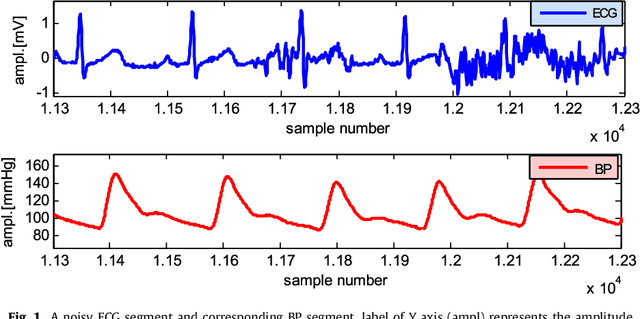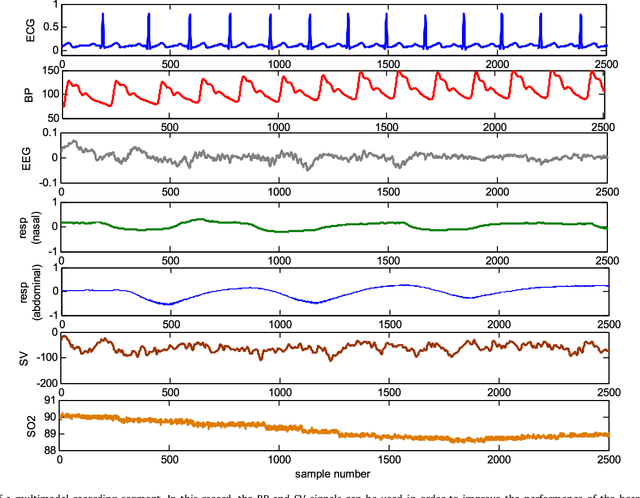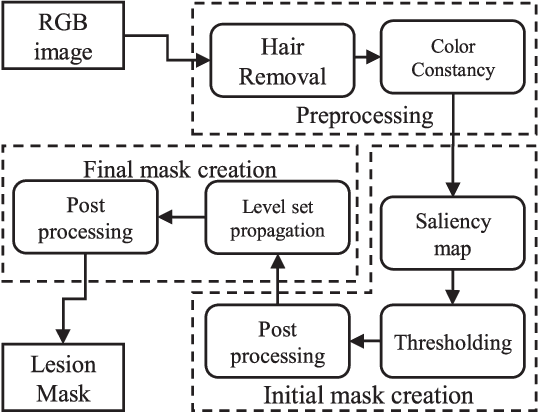Babak Mohammadzadeh Asl
Robust heartbeat detection using multimodal recordings and ECG quality assessment with signal amplitudes dispersion
May 20, 2021



Abstract:Method: In this study, a new method is introduced for distinguishing noise-free segments of ECG from noisy segments that use sample amplitude dispersion with an adoptive threshold for variance of samples amplitude and a method which uses compatibility of detected beats in ECG and some of the other signals which are related to the heart activity such as BP, arterial pressure (ART) and pulmonary artery pressure (PAP). A prioritization is applied in other pulsatile signals based on the amplitude and clarity of the peaks on them, and a fusion strategy is employed for segments on which ECG is noisy and other available signals in the data, which contain peaks corresponding to R peak of the ECG, are scored in three steps scoring function.
* 14 pages Journal paper 14 figures 3 tables
Supervised Saliency Map Driven Segmentation of the Lesions in Dermoscopic Images
Jun 07, 2018



Abstract:Lesion segmentation is the first step in most automatic melanoma recognition systems. Deficiencies and difficulties in dermoscopic images such as color inconstancy, hair occlusion, dark corners and color charts make lesion segmentation an intricate task. In order to detect the lesion in the presence of these problems, we propose a supervised saliency detection method tailored for dermoscopic images based on the discriminative regional feature integration (DRFI). DRFI method incorporates multi-level segmentation, regional contrast, property, background descriptors, and a random forest regressor to create saliency scores for each region in the image. In our improved saliency detection method, mDRFI, we have added some new features to regional property descriptors. Also, in order to achieve more robust regional background descriptors, a thresholding algorithm is proposed to obtain a new pseudo-background region. Findings reveal that mDRFI is superior to DRFI in detecting the lesion as the salient object in dermoscopic images. The proposed overall lesion segmentation framework uses detected saliency map to construct an initial mask of the lesion through thresholding and post-processing operations. The initial mask is then evolving in a level set framework to fit better on the lesion's boundaries. The results of evaluation tests on three public datasets show that our proposed segmentation method outperforms the other conventional state-of-the-art segmentation algorithms and its performance is comparable with most recent approaches that are based on deep convolutional neural networks.
 Add to Chrome
Add to Chrome Add to Firefox
Add to Firefox Add to Edge
Add to Edge